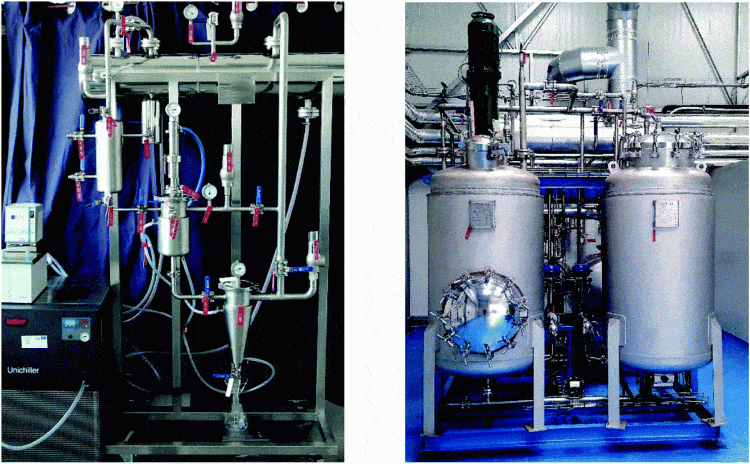In a previous article on clean and sustainable extraction technologies, we discussed instant controlled pressure drop techniques and extrusion technology. We continue that conversation here by diving in to mechanochemical technology and ohmic, infrared, and ultraviolet heating. [1]
Mechanochemical Technology
Grinding material to produce specific chemical reactions has been used for millennia to develop different products (e.g., flour from ground seeds). However, in recent years, there’s been an interest in mechanochemistry—“the study of physicochemical transformation generated by mechanical force.”
To put it simply, mechanochemical technology looks to further grind particles such that cell membranes are more easily penetrated to extract the contents within. It seeks better grinding efficiency and greater reproducibility. As an example, grinding plant material prior to extraction can speed up the process and improve yield due to increased surface area. [2]
Ohmic, Infrared, and Ultraviolet Heating
One of the biggest difficulties with heating processes is that the temperature can be unevenly distributed through a product. One technology that may be able to solve this issue is ohmic heating (also known as Joule heating). The process involves electrical currents passing through food/plant material which provides resistance. In turn, heat is dissipated. Ohmic technology allows you to choose applied voltages and electrical conductivity for specific products; low-strength electric fields (>100 V cm-1) can enhance extraction due to electroporation of cell membranes. Applied to hydrodistillation of essential oils, this technology can increase terpene yields and reduce energy consumption. [3]
Infrared (IR) radiation systems use electromagnetic radiation dispersed by lamps from vibrational and rotational energy. This method tends to have high energy efficiency. The process allows you to extract product through three different zones:
- Shortwave – High intensity (NIR: 0.76–2 μm)
- Medium wave – Medium intensity (MIR: 2–4 μm)
- Long wave – Low intensity (FIR: 4–1,000 μm)
The infrared spectrum allows for easy processing along with “direct heat penetration” with “no heating of surrounding air.” Combined with deep eutectic solvents, IR radiation has been shown to improve extraction of polyphenols from pomegranate peels. [4]
Ultraviolet (UV) light treatment works similarly but has a lower intensity on the electromagnetic spectrum. Through sources like mercury lamps and light-emitting diodes (LEDs), you can extract material through a “simple, dry and cold process.” UV extraction/processing is cost effective and requires low maintenance. Among potential applications, this technology can be used after mushroom extraction with supercritical CO2 to increase vitamin D2 and ergosterol. [5]
References
- Chemat F, et al. A review of sustainable and intensified techniques for extraction of food and natural products. Green Chemistry. 2020;22(8):2325-2353. [Impact Factor: 9.480; Times Cited: 43 (Semantic Scholar)]
- Wang S, Zhang R, Song X, Wei M, Xie T, Cao J. Mechanochemical-assisted extraction of active alkaloids from plant with solid acids. ACS Sustain Chem Eng. 2019;7(1):197-207. [Impact Factor: 7.362; Times Cited: 8 (Semantic Scholar)]
- Seidi Damyeh M, Niakousari M. Ohmic hydrodistillation, an accelerated energy-saver green process in the extraction of Pulicaria undulata essential oil. Ind Crop Prod. 2017;98:100-107. doi:10.1016/j.indcrop.2017.01.029. [Impact Factor: 4.244; Times Cited: 17 (Semantic Scholar)]
- Rajha HN, et al. Innovative process of polyphenol recovery from pomegranate peels by combining green deep eutectic solvents and a new infrared technology. LWT. 2019;111:138–146. [Impact Factor: 4.006; Times Cited: 16 (Semantic Scholar) ]
- Morales D, Gil-Ramirez A, Smiderle FR, Piris AJ, Ruiz-Rodriguez A, Soler-Rivas C. Vitamin D-enriched extracts obtained from shiitake mushrooms (Lentinula edodes) by supercritical fluid extraction and UV-irradiation. Innov Food Sci Emerg Technol. 2017;41:330-336. [Impact Factor: 4.477; Times Cited: 21 (Semantic Scholar)]












